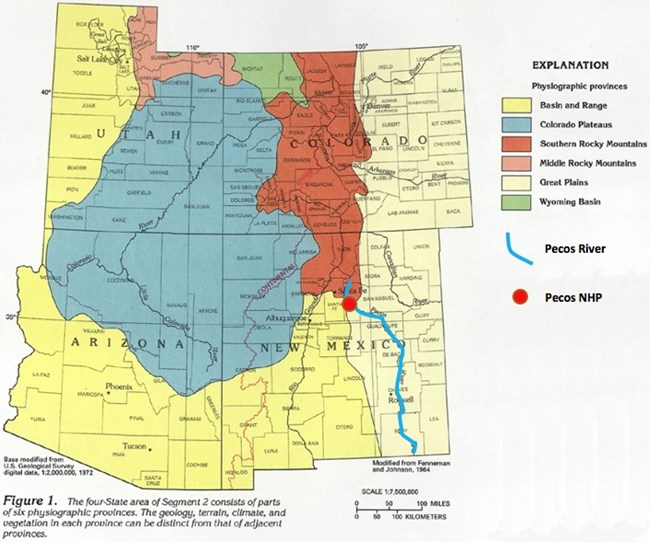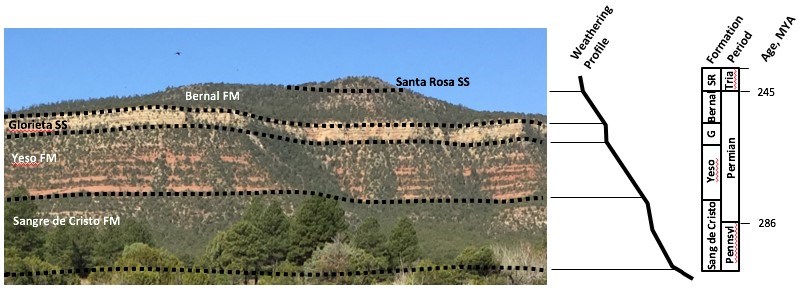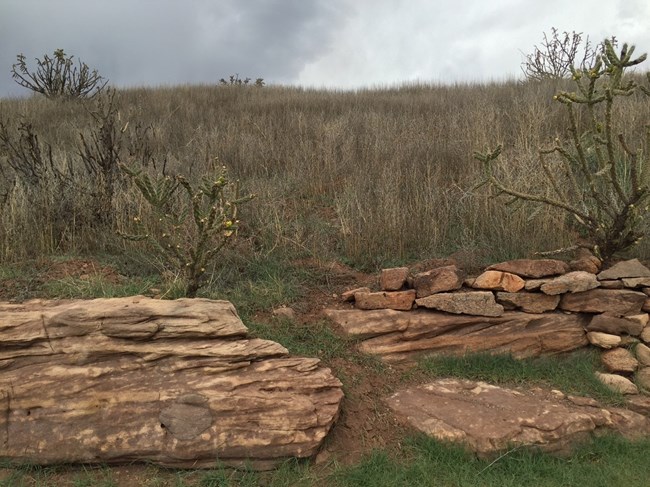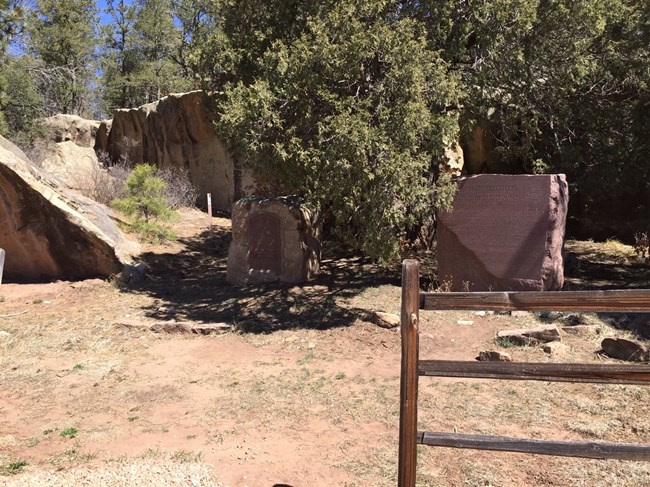
NPS Photo / VIP Laura Reich Past and present geological processes shaped the upper Pecos River Valley and its abundance of natural resources. In addition, the valley has been a significant migration corridor for people traveling the southern terminus of the Rocky Mountains, connecting the Great Plains with the Rio Grande Valley. Over 700 years ago, Pueblo people settled on a ridge in the middle of the valley that was surrounded by water sources, farmable land and building materials. Geographic SettingPecos National Historical Park is situated in the upper Pecos River Valley which is bound to the north by the Sangre de Cristo Mountains, to the east by the Tecolote Range and to the south-southwest by Glorieta Mesa (known locally as Rowe Mesa). The valley has an average elevation of 7,000 feet above sea level and encompasses roughly 18 square miles. Glorieta Mesa is over 25 miles long, and the highest point, Cerro de Escobas is 8,212 feet above sea level. The topographic relief between valley floor and mesa top can be over 1,000 feet and dramatically divides the landscape. 
Modified from U. S. Geological Survey publication HA 730-C Regional Geologic Setting
Local GeologyPrior to the current Sangre de Cristo and Southern Rocky Mountains, there were Ancestral Rocky Mountains. These earlier mountains formed approximately 300 million years ago during the Late Pennsylvanian and Early Permian geologic periods at the time of the super continent called Pangea. Following uplift of the Ancestral Rockies, erosional processes gave way to alluvial fans, deserts, river deltas, beaches and shallow seas, evidence of which can be seen in the rock layers of Glorieta Mesa. Eventually the Ancestral Rocky Mountains eroded completely and a shallow continental sea took their place during the Late Cretaceous geologic period (85 million years ago). 
NPS Photo / VIP Laura Reich Brief descriptions of Glorieta Mesa stratigraphy (rock layers, top to bottom, youngest to oldest):

NPS Photo / VIP Laura Reich Local Building RockThe Pecos people primarily constructed their dwellings using rocks from the Sangre de Cristo Formation that were found on the valley floor. This same sandstone forms the rock wall in front of the park’s visitor center. 
NPS Photo / VIP Laura Reich Geology and the Battle of Glorieta Pass (U.S. Civil War)As you drive New Mexico State Highway 50 between Interstate-25 exit #299 and the Village of Pecos, Sangre de Cristo Sandstone outcrops can be seen along the road. The many small ravines and ridges that formed the eroded sandstone served as the backdrop during the 3-day battle of Glorieta Pass. Sharpshooter’s Ridge, located in the park’s Glorieta Unit, is the most famous sandstone bluff used during the battle. Conclusion
|
Last updated: June 17, 2022
